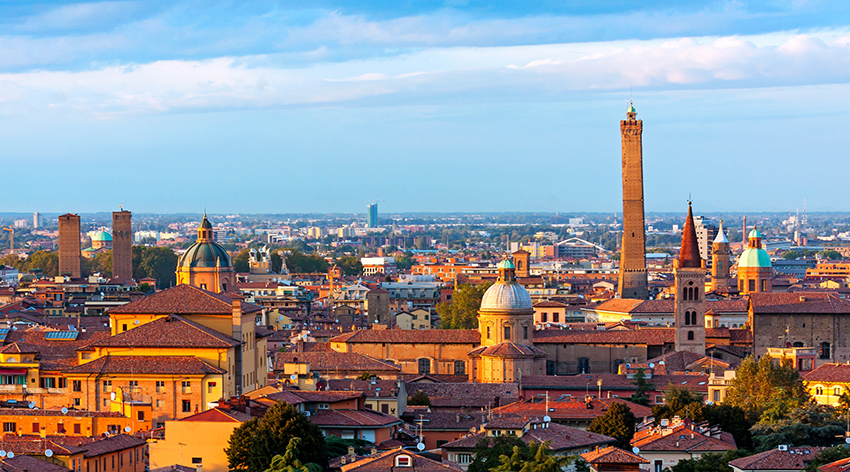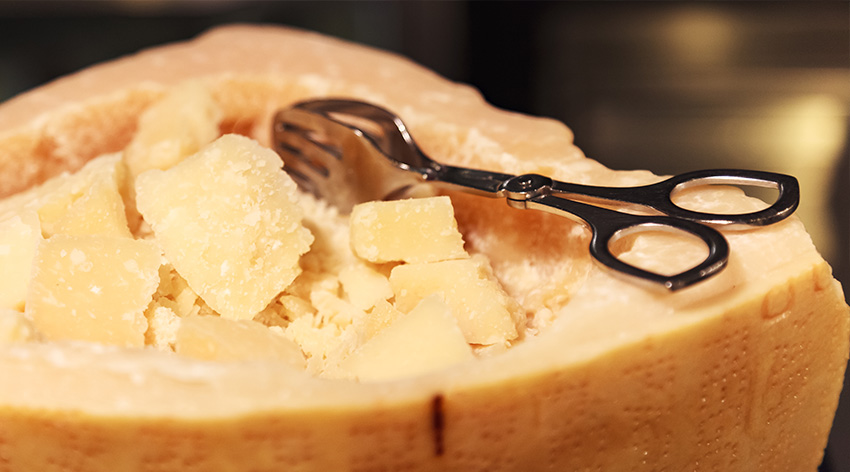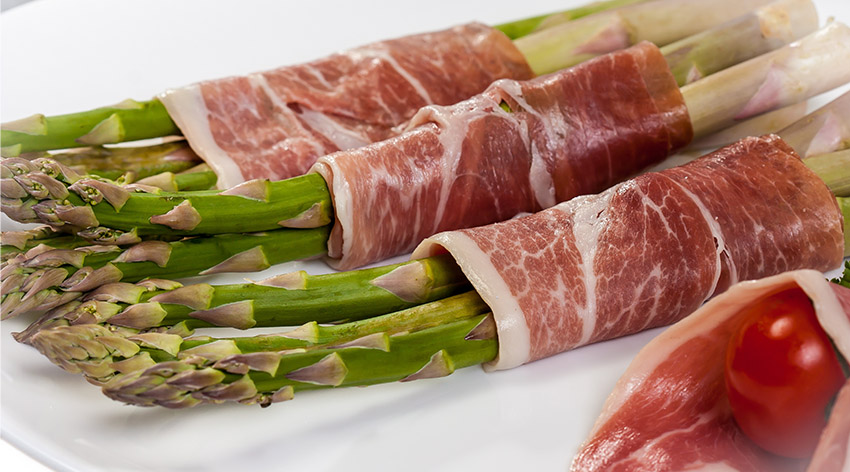
Situated in the northeastern part of the country, Emilia Romagna(uh·mee·lee·uh row·maa·nyuh) is worth a visit– in person if you can, or via its culinary treasures if stay at home you must. Bologna is the capital– famous for mortadella, ragù Bolognese, and fresh egg-based pastas such as tagliatelle and tortellini. Modena is home to the world’s best balsamic vinegar and Parma produces Italy’s most iconic cheese, Parmigiano Reggiano, as well as what may well be the mostly highly regarded prosciutto anywhere in the world.
Yes, it’s true. Emilia-Romagna is home to an Italian Culinary Quadruple Play: Prosciutto di Parma; Parmigiano Reggiano, Aceto Balsamico Tradizionale di Modena– Balsamic Vinegar of Modena and Mortadella Bologna.

Because Emilia-Romagna lies on the Adriatic coast, seafood commonly graces dinner tables. But the region is famous for its exports. Parma Prosciutto is Italy’s most prized air cured ham and is geographically protected by the Italian government’s PDO– Protected Designation of Origin label. So too is the famous hard cows-milk cheese Parmigiano Reggiano and the dark, concentrated, intensely flavorful Modena balsamic vinegars consumed all over Italy and exported to the world. And Bologna’s tasty contribution to the world of charcuterie is Mortadella, the authenticity of which is protected with a PGI ((Protected Geographic Origin) designation.

With almost 4.4 million people, Emilia-Romagna is one of the wealthiest and most developed parts in all Europe. The University of Bologna is the oldest university in the world. There is also apparently some high-octane fuel running in the veins of residents here as well: Ferrari, Lamborghini, Maserati, and Ducati all call this region home. And, as if to mock perfection, Emilia-Romagna is even home to beautiful coastal resorts such as Cervia, Cesenatico, Rimini and Riccione. Questo posto ha tutto!
Plus the famous “Sale di Cervia,” the “Sweet Salt of Cervia,” often called the “Pope’s salt” because of the tradition of taking the first harvest to the Pope in Rome annually. Natural evaporation creates a sea salt with a rich depth of flavor, whose absence of bitter minerals make it taste more “sweet” than other sea salts. There’s even a salt museum: Musa Cervia, in the town’s original salt warehouse: www.turismo.comunecervia.it
And wine? Of course! Sangiovese, Lambrusco, and Trebbiano are but a few varieties from Emilia-Romagna.